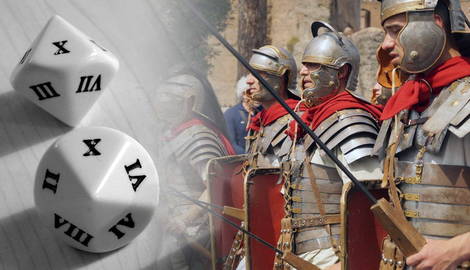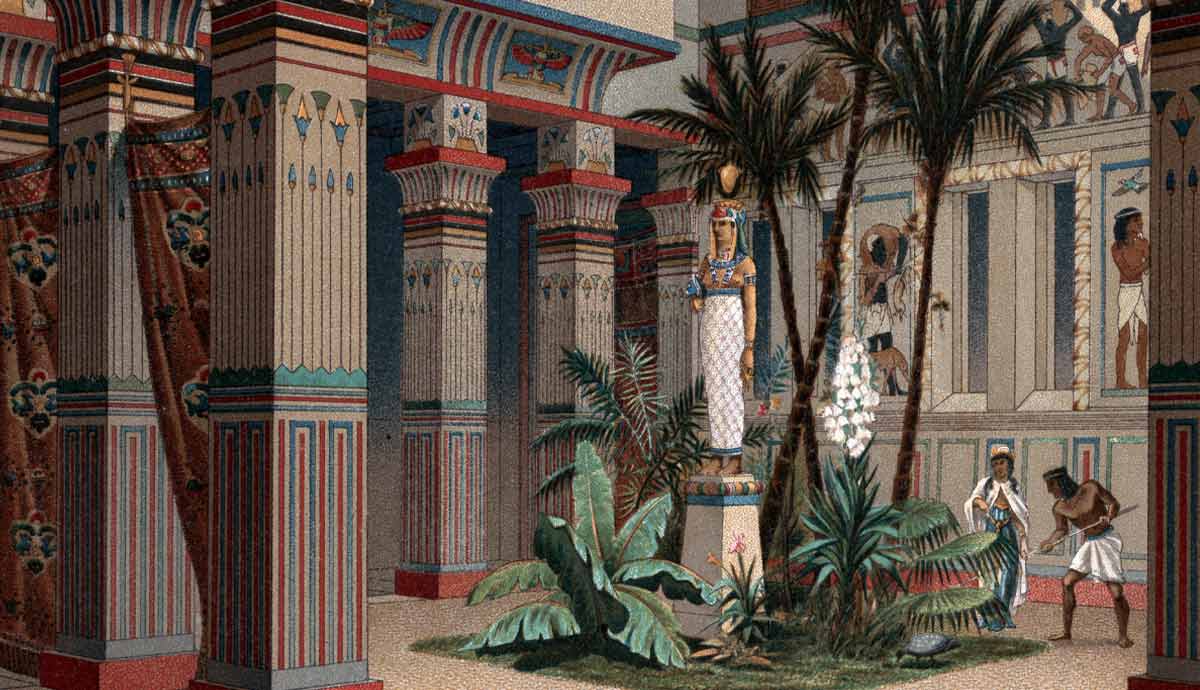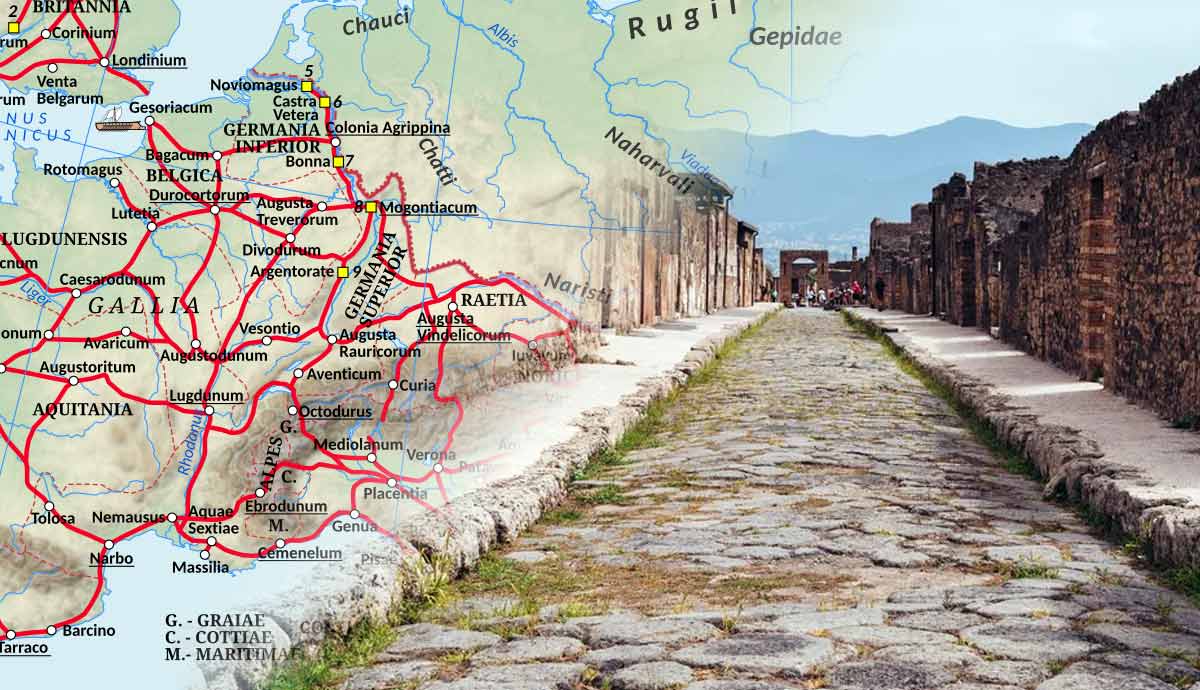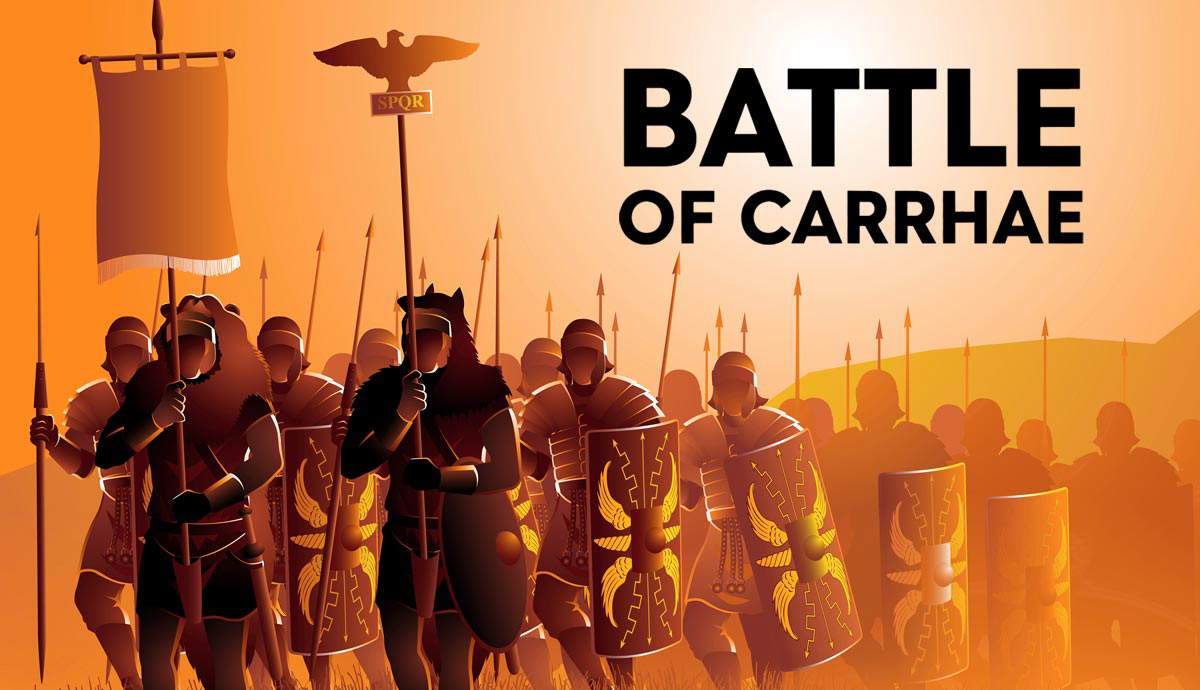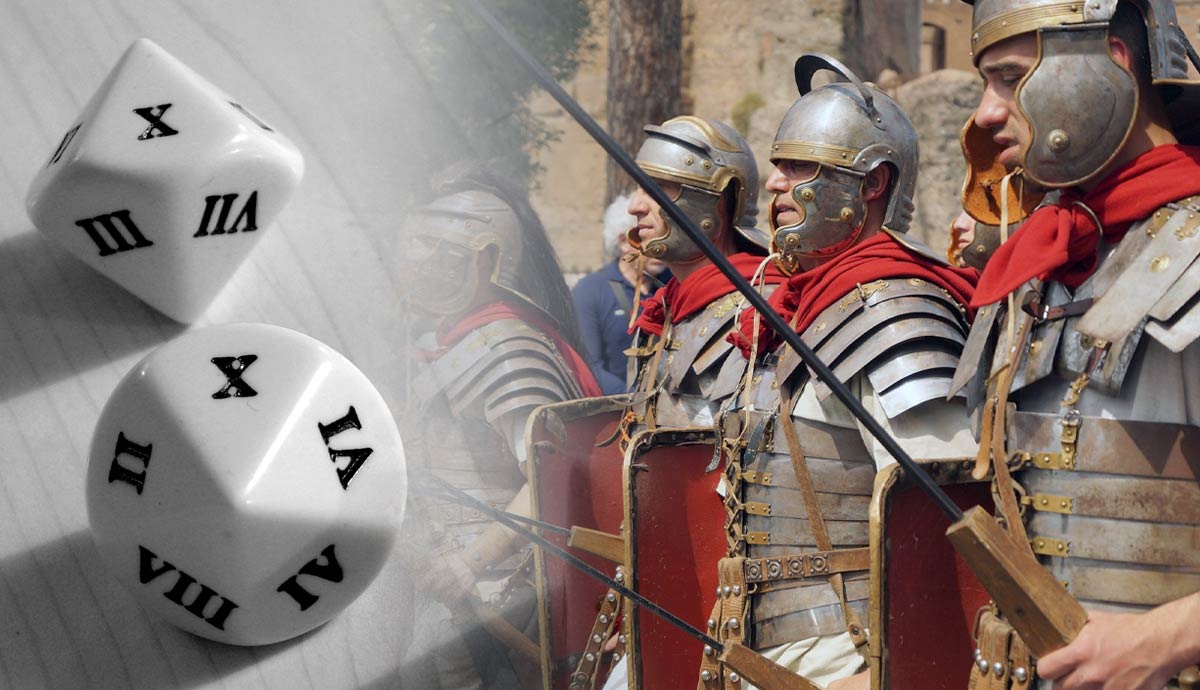
The Romans were a dynamic people who ushered in a new era for civilization. Behind the growth of the Roman Republic and the Roman Empire that followed were ingenious inventions that made expansion, efficiency, and maintenance of the state possible.
Over the course of many centuries, the Romans employed these inventions, which led to great success. From incredible construction methods to brutally efficient weapons, here are 7 of Rome’s most ingenious inventions.
1. The Pilum: More Than Just a Javelin
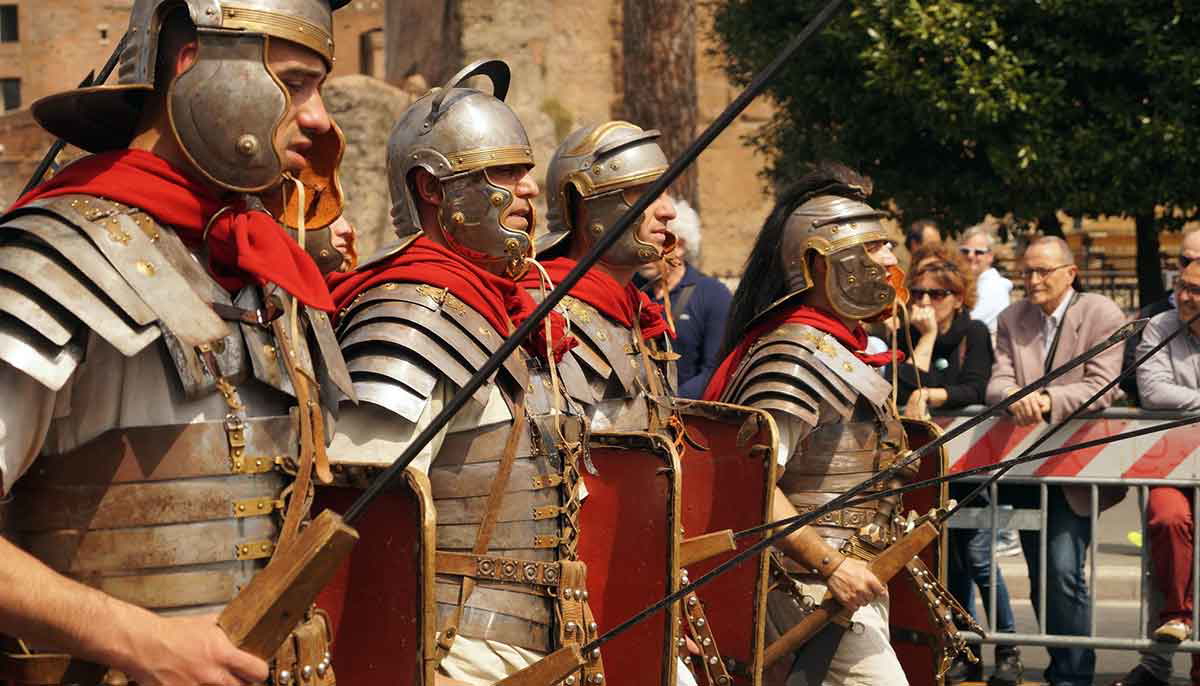
Spears have found a place in human society and conflict for many tens of millennia, from modern bayonets to the prehistoric spears used by our prehistoric ancestors. As expected, the Romans used spears too, and added their own design to the thrown form, giving it properties that other spears (or javelins) lacked.
The Roman pilum was an incredibly well-designed weapon that surpassed the capabilities of most javelins. The shank was designed to misalign with the haft upon impact, thus making it impossible to be thrown back at the Romans with any efficiency. It would also protrude from enemy shields at awkward angles, resulting in many opting to discard their shields rather than fight on with an impeded left hand. Julius Caesar even noted that the shank could bend, adding to this debilitating effect.
The fact that the shank was thinner than the hardened tip enhanced the weapon’s ability to penetrate, allowing it to pierce further through shields and armor. Caesar attests to the weapon’s penetrative power by writing that sometimes pila pinned two overlapping shields together.
2. The Codex: Book Binding

Before the Romans invented book binding, information was written down in various forms, most notably in the form of scrolls or on clay tablets. Around the first century CE, codexes (or codices) were invented. Made from parchment or vellum, pages of information were bound into books, making access to the information much easier and in a format that offered more durability.
Two millennia later, the concept is still very much alive and well, and there is little difference in the format in which we bind books today. In this form, the codex is a foundational element in information storage, libraries, education, and the publishing industry.
3. The Corvus: Turning Sea Battles Into Land Battles
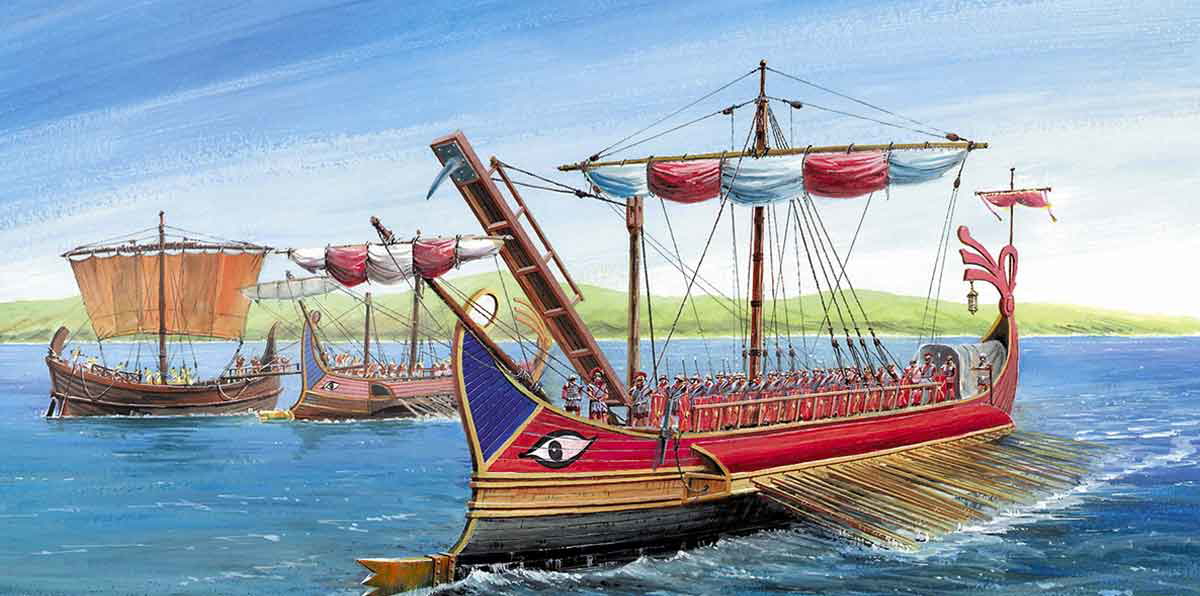
The Romans were renowned for their military expertise and prowess, but were (arguably) never considered a great naval power. During the era of the Roman Republic, that honor went to the Carthaginians on the other side of the Mediterranean. The Romans, however, had an invention that would give their naval assets a distinct edge over their rivals—the corvus (crow), which could be used to ensnare enemy ships and make way for boarding parties.
Greek Historian Polybius describes the device as being a 36-foot-long bridge that is 4 feet wide and has parapets on either side. The base of the bridge is attached to the mast and is controlled by a system of pulleys that allow it to swivel in addition to being raised and lowered. At the underside of the front of the corvus is a hooked spike, resembling a bird’s beak, which, when the device is lowered, pierces the deck of the enemy vessel, anchoring it in place. From there, Roman soldiers could board the enemy vessel and put their superior soldiery to good use.
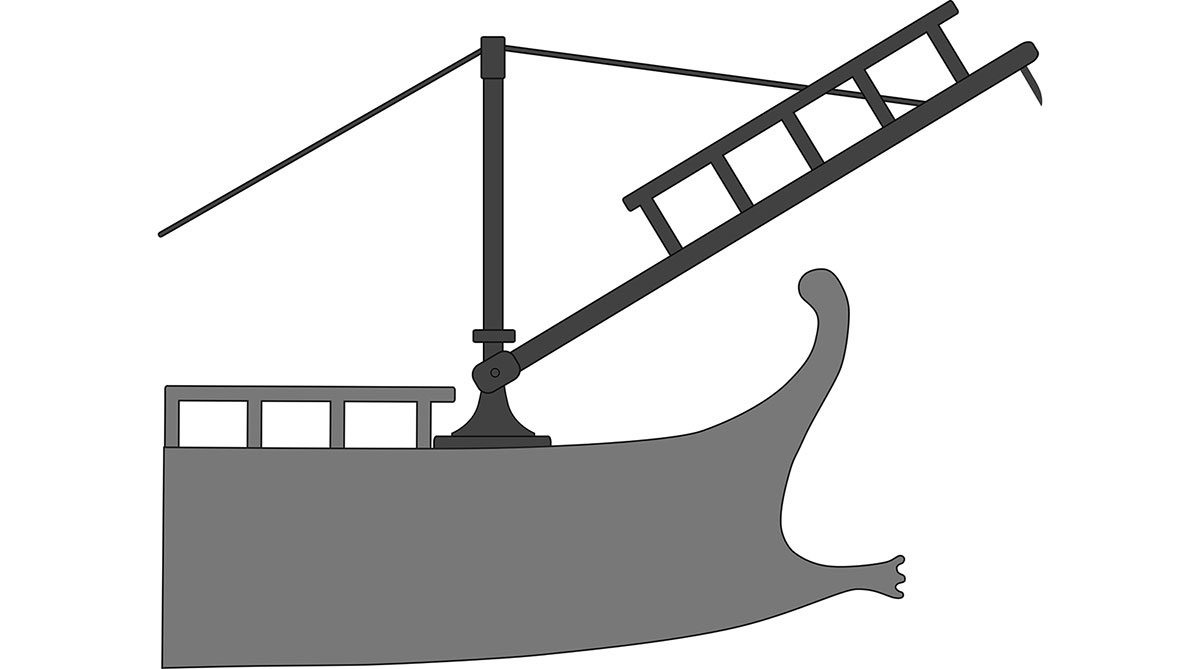
The corvus is mentioned as being used during the battles of Mylae (260 BCE) and Ecnomus (256 BCE) during the First Punic War. Roman historian Appian mentions the device being used as late as 36 BCE during the (second) Battle of Mylae. It is likely that the device aided Rome’s growth in confidence in its attempts to become a naval power. Once Rome had developed enough experience and knowledge on naval warfare, however, it seems the corvus was abandoned.
The corvus was superseded by the harpax, which was a harpoon and winch system. If Polybius’ words are to be believed, however, it would seem the corvus had a great impact on the course of history, as it helped Rome defeat Carthage—an event that set in motion Rome’s unchallenged rise to complete dominance over the Mediterranean, and growth into a massive empire.
4. Advancements in Surgery
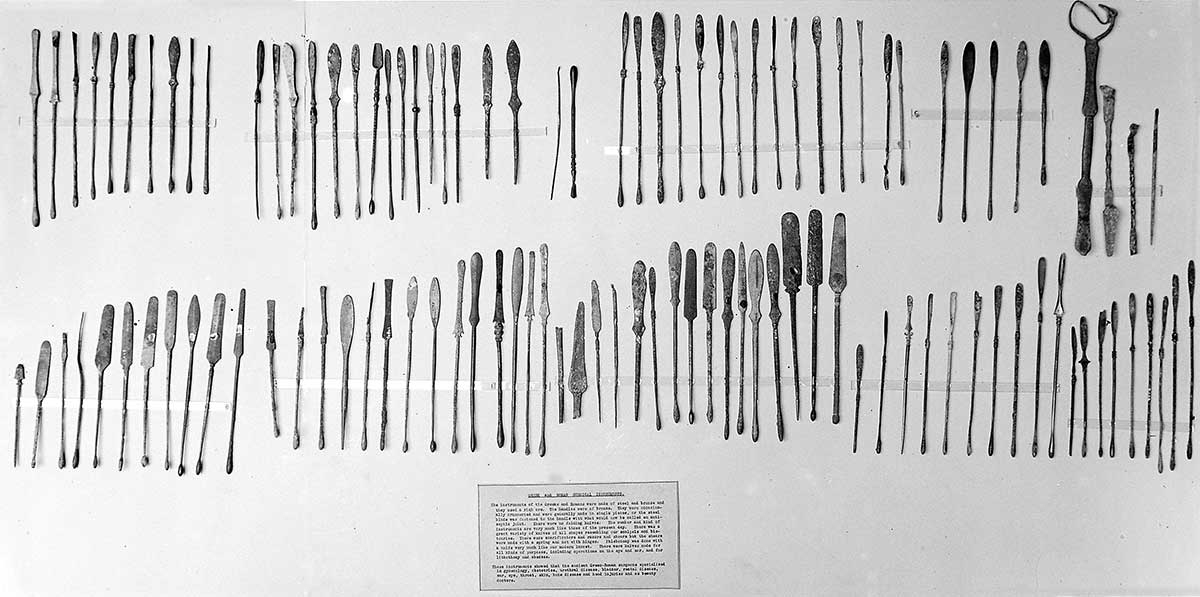
While the Romans can’t claim to have invented surgery itself, they did make great strides in advancing the practice, and were especially adept at putting their surgical skills to good use on the bloody battlefields where Roman soldiers sustained heavy injuries.
The Romans inherited their knowledge of surgery from the Greeks, and they advanced their knowledge significantly over the centuries, inventing new tools and techniques to deal with a huge array of medical situations.
Employing these tools and techniques were of prime importance in battle. The Romans used specialized tools for dealing with common battlefield injuries, such as the need to remove arrowheads. Surgeons could also set broken bones and perform amputations. Trepanation (drilling holes in the skull to relieve pressure) was also practiced. Bone drills, scalpels, catheters, and forceps were also part of the surgeon’s kit.
Although the theory on germs was unknown, the Roman surgeons did practice hygiene and washed their hands with vinegar or wine, both of which had antiseptic properties. Anaesthetics, however, were limited. Opium was used, as well as mandrake root, and alcohol, but surgery in ancient times, as it was before the invention of modern anaesthetics, was a painful and highly traumatic experience. Fortunately, Roman surgeons did sterilize their equipment in boiling water, and this limited rates of infection.
The Romans pioneered advancements across the board in medicine, and performed many operations, including amputations, mastectomies, tonsillectomies, oral surgery, hernia repair, neural surgery, and even cosmetic surgery.
5. Concrete: Foundation for an Empire

Several civilizations had their own version of concrete, but the Roman version was famously effective. Forming a foundation for their architectural endeavors, Roman concrete was an ingenious invention that advanced architectural achievements. Opus caementicium, as the Romans called it, was a hydraulic-setting cement that could harden in wet weather or even under water, and was combined with an aggregate to form concrete. When available, pozzolanic ash from volcanic sources was added. This ingredient prevented cracks from spreading.
Roman concrete was in use from around 150 BCE, with some sources suggesting it could have been in use a century earlier. Such was the durability of Roman concrete that there are widespread examples of it in the Roman buildings still standing after two millennia, earning it a candidacy for “the most durable building material in human history.”
The legacy of Roman concrete is not just one consigned to history books and the remains of what the Romans built. It is gaining traction in the world of construction, and concrete based on Roman recipes has been used in modern construction.
6. Roads: The Arteries of an Empire
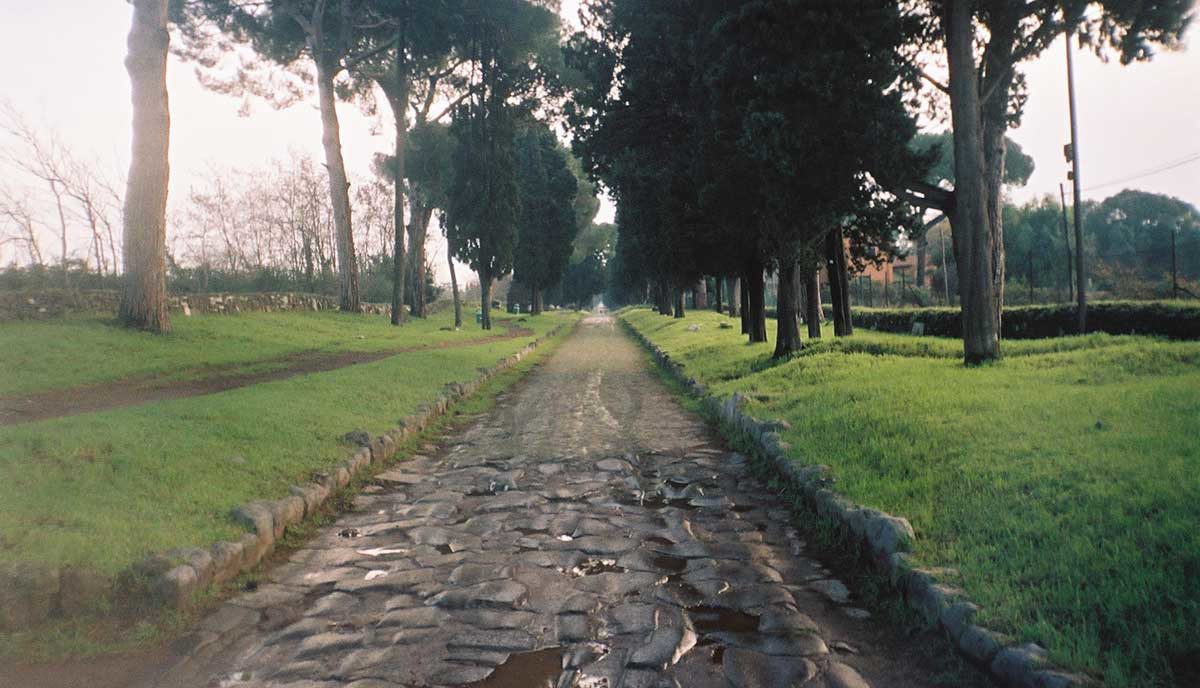
Pathways connecting towns and cities are as old as civilization itself, so the Romans can’t be said to have invented the idea of a road, however, they did build roads that were far more advanced than the ones built by their ancestors, ensuring their points from A to B were more durable and efficient.
Like their modern counterparts, not all Roman roads were the same. They differed in size and importance. As such, not all roads were built the same way. The construction of the major highways, however, was nothing short of impressive. They had cambered surfaces, which allowed for the drainage of rainwater, and were built upon several layers of different strata, including rock, gravel and concrete. The solid foundation helped the roads endure the centuries of wear and tear that they would be subjected to.
Roman roads were the vital network that served as the foundation for the maintenance and development of the empire (and the republic before it). They proved highly advantageous to the spread of trade and military logistics. Roads were often straight, facilitating ease of communication, and were studded with markers so that people knew where they were and how far their destination was.
To a significant degree, Roman roads, their construction and design, have influenced modern roads, and as such, the Romans can be said to have been a huge part of the evolution of road transport across a wide spectrum.
7. Roman Numerals

Although replaced by Arabic numerals in Europe beginning in the 14th century, Roman numerals played a significant role in Roman life and the science that helped Rome grow and prosper.
It is difficult to determine when the history of Roman numerals began, but it was probably around the 9th century BCE, and may have had something to do with shepherds using tally sticks to count their cattle. The system was probably derived from the system used by the Etruscans, who predated the Romans in the area.
Around the beginning of the Imperial Period (27 BCE onwards), Roman numerals seem to have been standardized as the classical system we know and still use today. In fact, this numbering system was still in use throughout the Middle Ages, long after the Western Roman Empire had disappeared. Today, Roman numerals are still used on clock faces, in the movie industry for listing the production date, for book chapters, for architectural inscriptions, and for numbering sporting events such as the Super Bowl!
Romans used their numbers for much the same reasons we use Arabic numbers today. Marking dates and time, transactions, counting and tallying, and bookkeeping were all essential to everyday life in Rome.
Of course, the system did have drawbacks. It was unsuitable for complex calculations, and it had no symbol for “0.” Nevertheless, the system represented one of the greatest Roman inventions.
